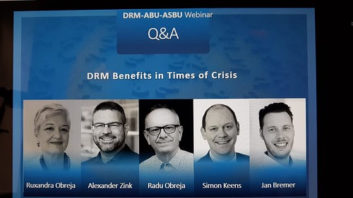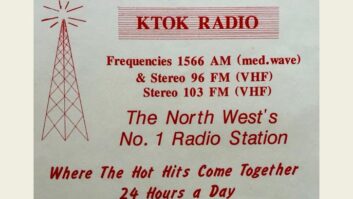
The author is chairman of Digital Radio Mondiale.
Coronavirus has been a once-in-a-lifetime disruptor. At the height of the pandemic, more than 2 billion people were under some form of lockdown and 7.1 billion people were in countries with border controls or travel restrictions.
The old certainties have been replaced by new realities, and even curiosities. How many fuzzy images and bookshelves have you seen recently on TV? How many radio interviews with dodgy sound — unacceptable, really, a couple of months back — have you listened to in the past 10 weeks? How many times have you conducted private and business meetings sitting in front of your laptop?
Working from home (WFH), IP Team Meeting and even “Zoom fatigue” now part of many people’s vocabulary and reality. The old events calendar has been binned and all the big radio or media events have been turned into webinars. There is a post-CES webinar available, a NAB webinar and so many others announced that your working day could be filled just with webinars.
[Read: Do We Need Community Radio?]
Digital Radio Mondiale (DRM) and its not-for-profit consortium also embraced the format with much enthusiasm. And the results were particularly good; DRM registered more participants in its latest three DRM webinars than in the old face-to-face seminars.
The list of endless webinar topics is endless. We have registered a lot of interest in several aspects of the radio business, from digitization and DRM implementation, to the extra DRM benefits, like data and multimedia availability, emergency warning functionality. The extra capacity and channels available in digital suddenly mean more varied content, possibly even in various languages, or different content for diverse interest groups (e.g. various music genres but also education, chat shows that give solace to many isolated listeners etc.).
The radio business is changing drastically. People are listening while they work (often from home), and so the peak time has become anytime. Travelling by car has gone down for now, but public travelling is not being encouraged, at least in the U.K. So, in the future, private cars will become even more important than before and with them digital radio, too. Office hours are also fluid so radio must be on its toes, come up with new formats and fresh approaches.
Localism, the great attribute of radio, matters more than ever as the coronavirus affects different areas and its people differently. Advertising post-corona needs to be reexamined as well. The old models might not attract many dollars now, and the new good, wide-ranging advertising needs must be nurtured with imagination and flair. So there is much to talk about and create webinars for.

One of the greatest attributes of this new communication platform is its capacity to be a great, open, all-inclusive arena. During a webinar we are all little squares on a screen. And behind their own screens, participants feel freer to ask questions and challenge the presenters with more courage than in a windowless imposing conference hall.
But the subject must be relevant, the presenters engaging and open-minded, with a genuine wish to share their knowledge. Some recent webinars have been openly or covertly product placement opportunities, company advertorials or stale presentations peddling the same old maps, statistics and graphs. The judgement of a webinar is swift. If your webinar is not relevant or informative, the number of participants decreases vertiginously, and you have your instant verdict on the left corner of the screen.
Webinars cannot replace the face-to-face contact, the frank discussion over coffee, the deal struck in a conference break. In time the “webinar or Zoom fatigue” will come to us all, but hopefully only after we have managed to share knowledge and establish a dialogue with peers and newcomers across the world. For now, at least, webinars stimulate us all, keep the old stakeholders and new players in touch with each other and keep our whole industry alive.
After the recent three DRM webinars, I came to the conclusion that a truthfully successful webinar is like a good DRM radio program: It needs good content, engaging speakers, good digital sound, often good, diverse coverage (with participants from different countries and professional areas) targeted messages and the possibility for interactivity.
Long gone are the webinars of the “What is…?” variety. We are focusing on the response and support radio can offer in extreme times like this. Digital radio, DRM in particular, is unique in its robustness and flexibility, able to give you news and music but also to deliver education and information when other platforms are not available or too expensive and to save lives through its built-in Emergency Warning Functionality.
The coronavirus will fade, but many viruses can still lurk out there, including cyber viruses. As in the words of the World Economic Forum publication on June 1: “During the 2020 Australian bushfires, power outages and damage to mobile phone infrastructure gave citizens a newfound appreciation for battery-operated FM radios. But if cyber-COVID ravaged a country, which radio stations would still operate without digital recording and transmission systems?”
There is the theme of a possible future webinar.
Ruxandra Obreja’s commentaries are a recurring feature. Comment on this or any story. Email [email protected] with “Letter to the Editor” in the subject field.







